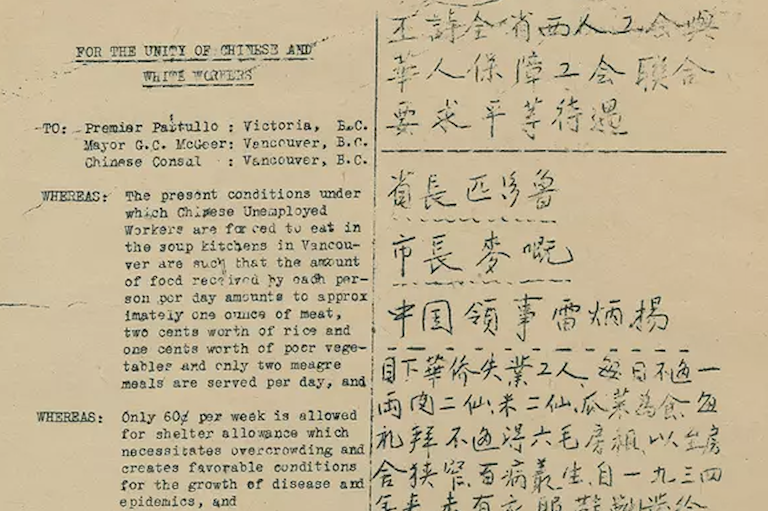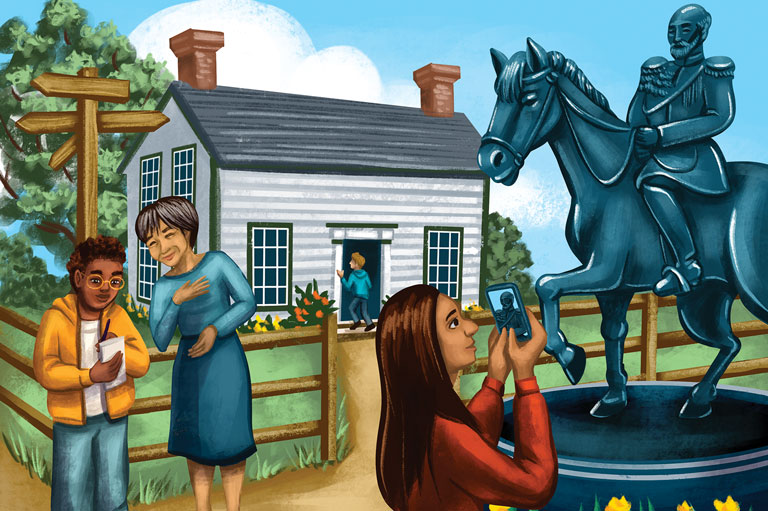Discover a wealth of interesting, entertaining and informative stories in each issue, delivered to you six times per year.
The Canadian Patriotic Fund, 1914–1919
Grade Levels: K-2, 3/4, with adaptions
Subject Area: Social Studies, Art
This lesson plan is inspired by the article “Waiting at Home” on pages 20–23 of the 2016 Remembrance Day digital issue of Kayak: Canada’s History Magazine for Kids.
Lesson Overview
In this lesson students explore the role of the Canadian Patriotic Fund during the First World War.
Time Required
2–3 lessons
Historical Thinking Concept(s)
This lesson plan uses the following historical thinking concepts: use primary source evidence and analyze cause and consequence.
Learning Outcomes
Student will:
- Identify the role of the Canadian Patriotic Fund,
- Recognize the role of Canadians on the home front during the First World War, and
- Draw and/or visually depict images representing ways in which Canadians supported soldiers in Europe in the First World War.
Background Information
The Canadian Patriotic Fund was a private organization which co-coordinated fundraising and provided monthly grants to wives and dependents of soldiers. The Fund was headed by Montreal businessman and Conservative Member of Parliament Sir Herbert Brown Ames. Its principal tasks—fundraising, relief, and the provision of social advice to recipients—were carried out primarily by hundreds of women who acted as volunteer social workers.
The Lesson Activity
Activating:
- Write the following statement on the board: At the time of the First World War, Canada’s population was about eight million. Most of them fought the Great War at home.
- Ask: What does this statement mean? How could a war be fought at “home”? What could people in Canada do to support the war effort in Europe? Who do you think the main “fighters” at home were: men or women? Why?
- Circulate several images of posters printed by the Canadian Patriotic Fund.
- Ask: What do you think the aim of the Canadian Patriotic Fund was? Who was the chief recipient of their aid?
- Provide an overview of the Canadian Patriotic Fund.
Acquiring:
- Distribute Patriotic Fund Supporter/1917 – pin, one to each student [cut them out beforehand]. Instruct the students to affix them to their person using pieces of tape or a pin.
- Read aloud page 21 from the article “Waiting at Home” in the 2016 Remembrance Day digital issue of Kayak: Canada’s History Magazine for Kids.
- Brainstorm and make a list on the board of a number of ways people “at home” can support a war effort abroad.
- Expand by asking: what consequences did the war have on life for Canadians at home?
Applying:
- Instruct students to design a class bulletin board displaying the information they have generated.
- Tell them to remove their Patriotic Fund Supporter/1917 – pins and affix them to the bulletin board to form a perimeter.
- Have students draw and colour images representing ways in which Canadians supported soldiers in Europe in the First World War [money, food, clothing, letters of support, women working in factories, children volunteering, etc.].
- Affix the students’ drawings to the bulletin board. Be sure to give the display a clear title.
Materials/Resources
- Patriotic Fund Supporter/1917 — pin, one for each student (available on lesson plan download)
- Several Canadian Patriotic Fund posters
- Bulletin board space
- Art supplies – paper, coloured pencils, etc.
References
The Canadian Patriotic Fund Posters
The Canadian Patriotic Fund on the Home Front from the Canadian War Museum
The Canadian Patriotic Fund from the Toronto Public Library





